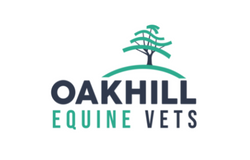Eye injuries
If you notice an eye problem in your horse it is vital that it is seen by a vet within 48 hours, as eye conditions can progress very quickly.
EYE INJURIES
Horses’ eyes are easily damaged, as their position on the head means they are at risk when the horse grazes near hedges, or brushes past trees. A painful eye in the horse is a veterinary emergency. Most conditions are easily treated but if untreated severe disease can occur which may threaten the horse’s sight in the future.
SIGNS TO LOOK OUT FOR
A painful eye will usually have swollen eyelids, drooping eyelashes, excessive tearing and blinking. Occasionally there will be obvious problems, perhaps a foreign body, such as a thorn, stuck into the eye.
Signs to watch out for:
- Watery or cheese like discharge from the eye
- Blinking
- Shut eye or hot eye
- Swollen eye of lids
- Dislike of bright light
- Rubbing of the eye
Treatment of a painful eye is classed as a veterinary emergency, so please call us as soon as you notice and of these symptoms. Whilst waiting for the vet, don’t be tempted to put anything in the eye. Bathing the eye with clean warm water is OK.
INVESTIGATION & TREATMENT
Your horse’s eyes can be examined on your yard or at our equine clinic, in our dark room.
Horses have a very strong blink reflex, so the vet may need to sedate the horse and desensitise the upper eyelid to fully examine the eye.
Initially, the bony structures around the eye will be examined for any obvious fractures. The upper, lower and third eyelids will then be checked for foreign bodies, such as hay seeds, stuck underneath. Any obvious wounds, lacerations or foreign bodies on the eye surface (cornea) will be noted and the inside of the eye will be checked for inflammation (seen as cloudiness) or problems at the back of the eye. This examination will require a good torch and an ophthalmoscope.
The vet will then usually apply a fluorescent stain to check for damage to the cornea. Any areas of damage will stain fluorescent green and these are called ulcers.
Any wounds around the eyelids will be examined and stitched if possible.
